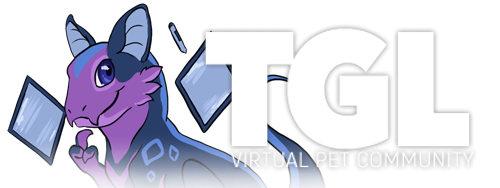Ooh, I want to know about this. =o I noticed (at least from what I can tell) that queries do not seem to work in Imagemagick files. So if you were to only $_GET the pet's ID, how would you go about getting species/color info? Is there a special kind of query or other trick to it?
I can see how just passing the ID through $_GET would work for customizations if you have the images for those saved by pet ID.
The idea is not to save the image (you could cache them if you wanted to), but rather store the details of the pet in a database for retrieval and rebuild the image dynamically off of that. if you concerned about performance, you could apply caching, however that is a more advanced topic and really just wraps around the generation.
A very simple process is to have a pet with say 3 columns that identify them. species, marking, and color. You can even have several different tables, but in the example here, let's keep it simple. If enough people ask, I can actually provide a more complex structure that I used in my game in development.
Below is the script from above with some added PDO (PHP's database layer) to query for pet information before we render.
<?php
// First lets see if we have an "pet_id" added to the query string.
if(!isset($_GET['pet_id']))
die('We need an id!'); // if this page is called in am img tag, it will appear broken.
// Not included in this example is any validation that pet_id is a number or safe.
// Lets setup the database.
$host = '127.0.0.1';
$db = 'test';
$user = 'root';
$pass = '';
$charset = 'utf8';
$dsn = "mysql:host=$host;dbname=$db;charset=$charset";
$opt = [
PDO::ATTR_ERRMODE => PDO::ERRMODE_EXCEPTION,
PDO::ATTR_DEFAULT_FETCH_MODE => PDO::FETCH_ASSOC,
PDO::ATTR_EMULATE_PREPARES => false,
];
$pdo = new PDO($dsn, $user, $pass, $opt);
// Lets get the pet information.
// Note, the pet table has 3 columns + id in this example for customization:
// pet_id = INT
// species - VARCHAR
// markings - VARCHAR - contains a marking type to include
// color - VARCHAR - contains a string in a ImagicPixel format (i.e. "rgba(125,125,125,1)")
// Your pet table would normally contain name or other fields, we are keeping simple in this example.
$stmt = $pdo->prepare('SELECT * FROM pets WHERE pet_id = ?');
$stmt->execute([$_GET['pet_id']]);
$pet = $stmt->fetch();
// Remember to order these in reverse, the last element in the array should always be the top layer you will see (usually lineart). All images should be the same dimensions.
// Note that we are using variables from our table to build the correct images we would need for this pet.
$images = array(
'path/to/' . $pet['species'] . '/base.png',
'path/to/' . $pet['species'] . '/' . $pet['markings'] . '.png',
'path/to/' . $pet['species'] . '/lineart.png'
);
// This creates the Imagick class that we will use.
$composed_image = new \Imagick($images);
// Now we can actually do some fun stuff such as color or tint the layers.
// For instance, let's tint the base. I am using random (probably awful colors)
// Base
$composed_image->setIteratorIndex(0);
$composed_image->colorizeImage(new \ImagickPixel($pet['color']), new \ImagickPixel("rgba(128,128,128,1"));
$composed_image->tintImage(new \ImagickPixel($pet['color']), new \ImagickPixel("rgba(128,128,128,1"));
// As you see above, by calling setIteratorIndex(), you switch your "working layer" to the layer you wish to modify.
// Now lets flatten it and display it. This creates a new Imagick instance to work with with only one flat image.
$image = $composed_image->mergeImageLayers(\Imagick::LAYERMETHOD_FLATTEN);
$image->setImageFormat('png');
header('Content-type: image/png');
echo $image->getImageBlob();
The main point is to store what you need to reconstruct the pets image. This sample means one script can display really any species of pet, with a different base color and markings layer.
@Hare I hope this is what you are asking about?

